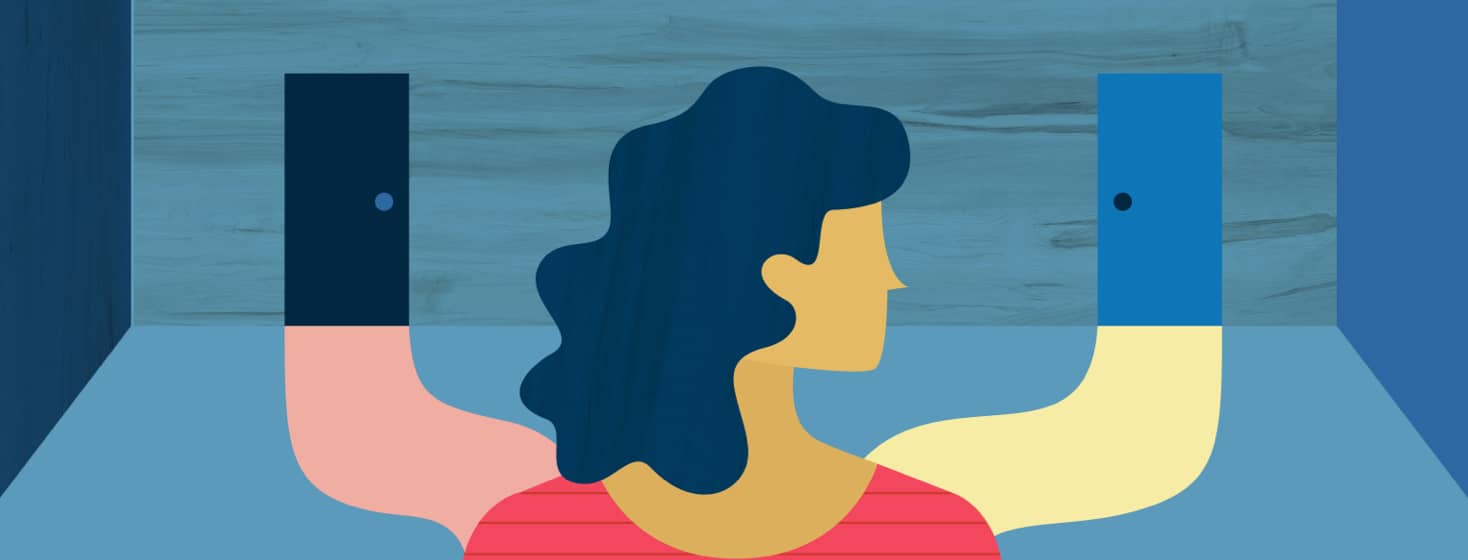A Difficult Decision About Scoliosis Surgery For Our Daughter
In the 1980s, my daughter who had spinal muscular atrophy (SMA) was growing bigger and taller. We noticed that she was having difficulty sitting upright by herself in her wheelchair.
My daughter was leaning more to one side. We took her to the pediatric neurologist. He ordered a custom brace to help straighten her spine. This would help stabilize her sitting position.
Also, he felt that her curved spine could eventually affect her internal organs from functioning normally. He said that sooner or later, she would need scoliosis surgery.
What is scoliosis?
Scoliosis is an abnormal sideways or twisting curving of the spine. Weak spinal muscles cannot support the spinal column in the upright position.1 In addition, it is considered a major health-related problem that people who have SMA may have to deal with.2
Effects of scoliosis on SMA type 2
Scoliosis can affect how well the air moves into and out of the lungs. It also may cause a stiffening of the hip joint.
Subsequently, sitting mobility becomes impaired. However, my daughter was tilting forward at the pelvis. She was unable to distribute her weight evenly.
She was leaning forward to take the pressure off her backside to be more comfortable. However, her posture caused her chest cavity to be misshaped. The lungs were not able to expand all the way. Additionally, her swallowing ability was becoming affected.
The decision for a body brace or surgery
Since she was unable to walk, her neurologist recommended a custom body brace. This would allow the spine to continue to grow. However, he said that this personalized body brace would probably not keep the curve from getting worse.
The neurologist also mentioned that this would let her breathe easier for the time being. He ordered a customized seating device fitted to her wheelchair. Putting this care plan in place would buy us time until future surgery.
The pros and cons of surgery
We learned of the risks and benefits of scoliosis surgery. This would be major delicate surgery.
Accompanying risks could include a reaction to anesthesia and excessive blood loss. In addition, extended time of the surgery and accidentally cutting the spinal cord could occur.
The benefits of having this surgery could improve my daughter’s ability to help her balance. The resulting surgery could improve her breathing, posture, and internal organs function.
However, there are cons to having surgery. We were told that stabilizing the spine may restrict movement of the trunk to the pelvis. This fact was reported by the Spinal Muscular Atrophy Association.2
If my daughter’s pelvis was restricted, her body flexibility could also be limited. My daughter's physical condition may be a major factor in her surviving the operation.
Considering all the facts:
My wife and I had to consider all the facts. First, my daughter was very thin and frail.
Second, could she withstand the surgery and anesthesia? Third, when is the right time to schedule the surgery? Fourth, who would be on the multidisciplinary team if problems arose? Lastly, we needed to consult with other doctors for their opinions.
Our decision:
Finally, after deeply considering all the information and the fragile nature of our daughter, we decided that she would not have the surgery at that time and we would reassess the situation in the future. Additionally, the surgeon said that there was a high probability that she would not survive the surgery due to her current physical condition. The surgeon and neurologist agreed with our decision. And life went on...

Join the conversation